The House Party of the early ‘00s was a magical place — the scene of your first awkward kiss, first horrific vomit and first public bump ’n grind — set to a soundtrack of RnB duets and pop punk party anthems. Pixelated, red-eye digital photos that remain might give the impression these were all sponsored by Vodka Cruisers (ever the tastemaker, I was a Lemon Ruski drinker — chicer and just different enough to be superior).
The pre-party checklist was an old condom in a velcro wallet (chain optional) and a 4-pack of sugary pre-mixed drinks. I flat-ironed my hair, bubbling with anticipation for the night ahead — would I make out with an enemy in a bush so we hate on each other on Monday? Could I shimmy my way into ‘sexual experimentation’ with the boys again?
It was truly a wondrous time, and if my prediction is correct, will be studied for millennia to come.
Enter The House Party of 2020.
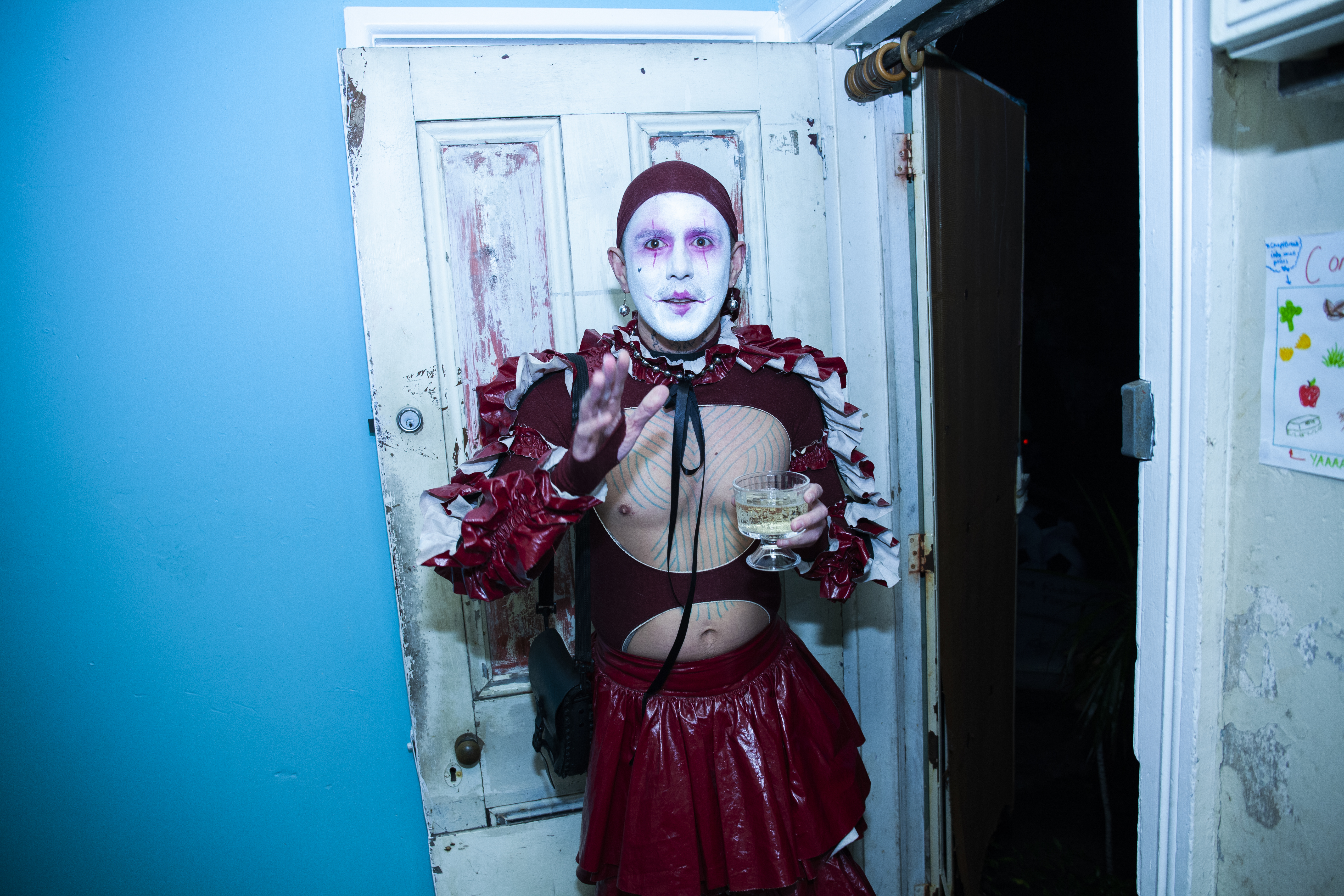







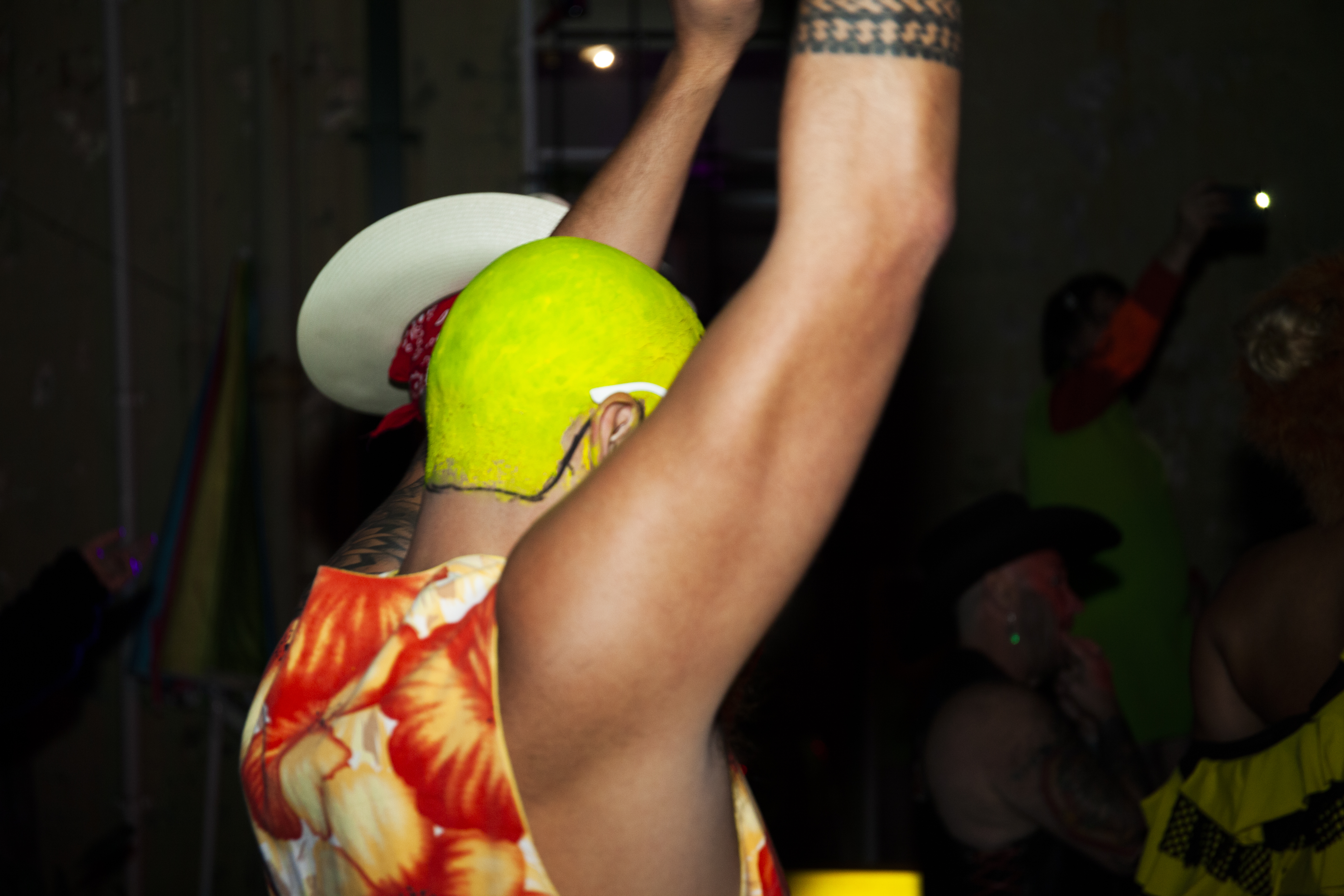




Clubs are closed around the world and whatever our circumstances, we’re all staying home more than more ever. Girl, she just wants to dance! She misses the fantasy, the sweat, and dare I say, she even misses her hair being held back…
But 2020’s silver lining is sparkling through the gloom — she’s serving community love and positive mental health realness. I’m back in Australia, where lockdowns have been lifted and gatherings of up to 20 people are allowed. I shot it as part of the final scene for The Working Bitches’ new music video at The Dirty Habit, a queer artists’ share-house I’m living in. This photo series is my blueprint for what a House Party should be from now on. I hope things stay safe so we can all experience a joyful, tingly night like this one again — and there’s not a flat-ironed fringe in sight.
PHOTOS AND TEXT BY COWAN WHITFIELD
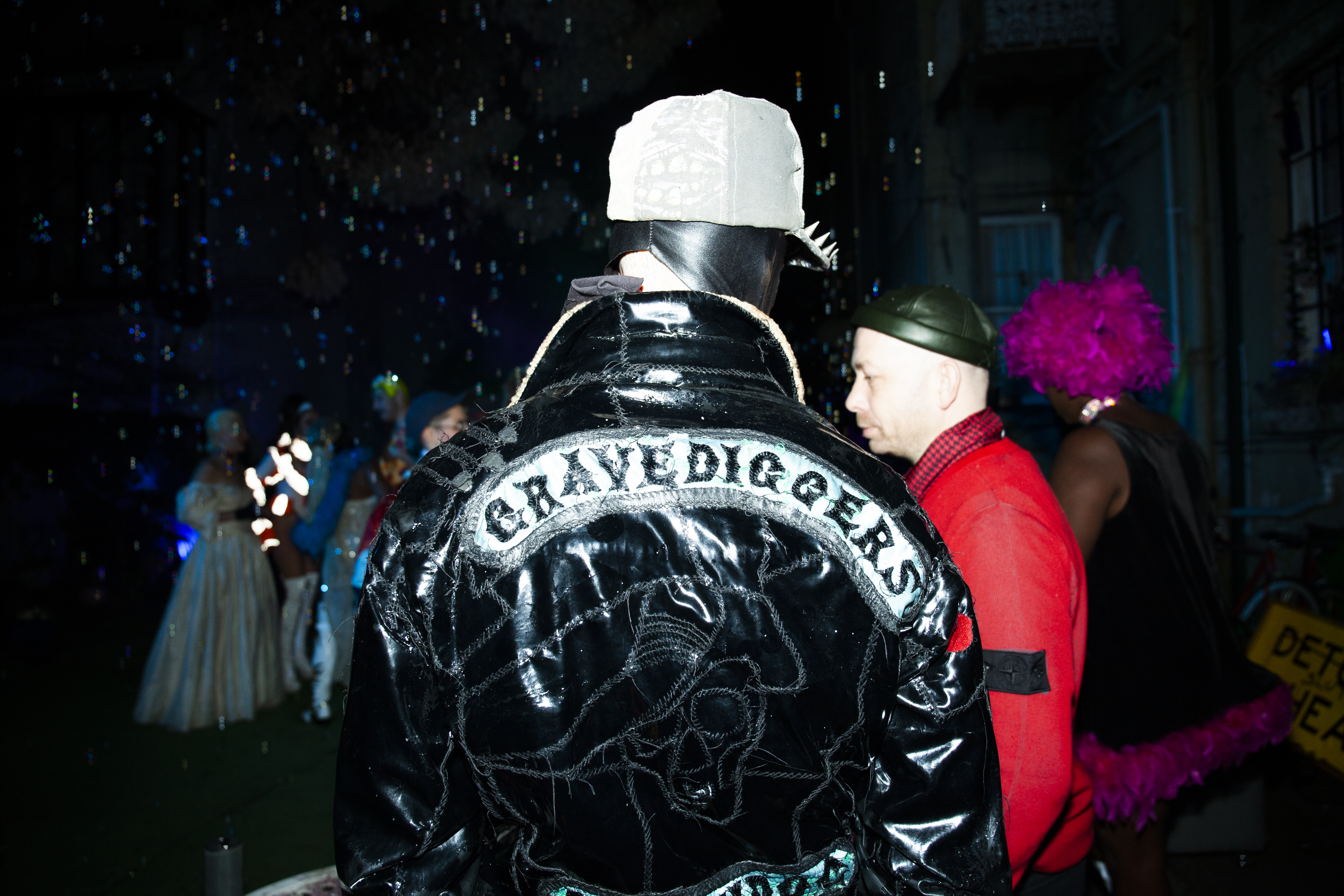
THE LAST PARTY:
A State Of Uncertainty
By Eric Hehr
Shot in 1992 during the contested presidential election between George H.W. Bush and Bill Clinton, THE LAST PARTY feels uncannily auspicious from the retrospective lens of 2020. Directed by Mark Benjamin and Marc Levin, the documentary follows a young Robert Downey Jr. traversing a polarized America, navigating the waters of early nineties sociopolitical issues and their subsequent weaponization in lieu of the impending election.

Although much has changed since its release, THE LAST PARTY’s depiction of how much has stayed the same is what gives it such an indelible relevance. The political issues and civil unrest boiling over the surface and spilling out onto the streets that Downey walks in 1992 are omnipresent in 2020: affirmative action, healthcare, law enforcement and criminal justice, race and ethnic inequality, economic inequality, abortion, women’s rights - just to name a few. Throughout the candid interviews and protest footage surrounding these topics, a critique of the media’s responsibility to report factual news hangs over the film like a black cloud.
As the film’s tour guide, Downey presents himself more as a curious goofball than a political analyst, bouncing back and forth between the roles of investigative journalist and vaudeville comedian at the drop of a dime. Still shaking off the echoes of his Oscar nominated role in CHAPLIN, Downey pantomimes the silent film star’s physical humor throughout, viewing his role in THE LAST PARTY as a continuum of Chaplin’s artistry: “What interests me so much about Chaplin is not so much the fact that he was a comedic genius, but the fact that he seemed able to be a social critic and creative at the same time.”
As the film’s tour guide, Downey presents himself more as a curious goofball than a political analyst, bouncing back and forth between the roles of investigative journalist and vaudeville comedian at the drop of a dime. Still shaking off the echoes of his Oscar nominated role in CHAPLIN, Downey pantomimes the silent film star’s physical humor throughout, viewing his role in THE LAST PARTY as a continuum of Chaplin’s artistry: “What interests me so much about Chaplin is not so much the fact that he was a comedic genius, but the fact that he seemed able to be a social critic and creative at the same time.”

Freshly sober but teetering into a relapse, we see Downey meditating in front of the Statue of Liberty, playing bongos in a jam session, getting tarot card readings, and wandering through nature, barefooted and adorned with beaded necklaces. “There’s a movement in this country towards self realization, towards spirituality,” Patti Davis, the daughter of Ronald Reagan, tells Downey, “It’s come about out of crisis because we are a planet in crisis. We have this idea that we are a society in which a lot of dysfunctional family exists, but I think we’re missing the point that because of that, we are a dysfunctional country.”
The first half of THE LAST PARTY primarily takes place in New York City, where the Democratic National Convention is being held. But before heading to the DNC, we follow Downey through the agitated streets of the city.
“George Bush, have no doubt, women want you OUT!” protestors chant at a women’s rights march, "Woman have to sweep the nation! After the house, clean the senate!”
A young woman marches, holding a stencil print sign, “I HAVE A VAGINA AND I HAVE AN OPINION.” Downey stops to ask, “What is your opinion?”
The first half of THE LAST PARTY primarily takes place in New York City, where the Democratic National Convention is being held. But before heading to the DNC, we follow Downey through the agitated streets of the city.
“George Bush, have no doubt, women want you OUT!” protestors chant at a women’s rights march, "Woman have to sweep the nation! After the house, clean the senate!”
A young woman marches, holding a stencil print sign, “I HAVE A VAGINA AND I HAVE AN OPINION.” Downey stops to ask, “What is your opinion?”

“My opinion is that everyone should have the right to choose. Unless you’re a straight white male, you’re basically fucked.”
At another rally, a large crowd gathers in front of Rev. Al Sharpton, chanting in unison, “NO JUSTICE, NO PEACE” as Sharpton names off a list of black men who were killed by the NYPD. “If he [Clinton] wants to be president, he should be president of all the people and address all the issues: police brutality, criminal justice, racial violence,” Sharpton tells Downey. “I don’t want him to run on an economic plan and act like we don’t have criminal justice problems.” The 1992 election took place months after the Los Angeles riots, which occurred after Rodney King was savagely beaten by LAPD officers. Racial tensions in the country had reached a fever pitch.
At another rally, a large crowd gathers in front of Rev. Al Sharpton, chanting in unison, “NO JUSTICE, NO PEACE” as Sharpton names off a list of black men who were killed by the NYPD. “If he [Clinton] wants to be president, he should be president of all the people and address all the issues: police brutality, criminal justice, racial violence,” Sharpton tells Downey. “I don’t want him to run on an economic plan and act like we don’t have criminal justice problems.” The 1992 election took place months after the Los Angeles riots, which occurred after Rodney King was savagely beaten by LAPD officers. Racial tensions in the country had reached a fever pitch.

Fresh off of directing MALCOLM X, Spike Lee tells Downey, “Here in America, racism is interwoven into our fabric. When you talk about America, you talk about baseball, apple pie, and racism. And most of the time, racism is tied into economics.”
As groups of camera-shy NYPD officers flock the streets due to what they deem as “civil unrest,” Downey interviews a group of young black men about the riots that had recently occurred: “This whole place was like a war zone. Cars on fire, places were getting looted. Why? Because we all got fed up - fed up with the police state out here.”
Motioning to the NYPD officers down the block, Downey asks, “Do you think every one of those guys would fuck you up without thinking twice about it?”
As groups of camera-shy NYPD officers flock the streets due to what they deem as “civil unrest,” Downey interviews a group of young black men about the riots that had recently occurred: “This whole place was like a war zone. Cars on fire, places were getting looted. Why? Because we all got fed up - fed up with the police state out here.”
Motioning to the NYPD officers down the block, Downey asks, “Do you think every one of those guys would fuck you up without thinking twice about it?”
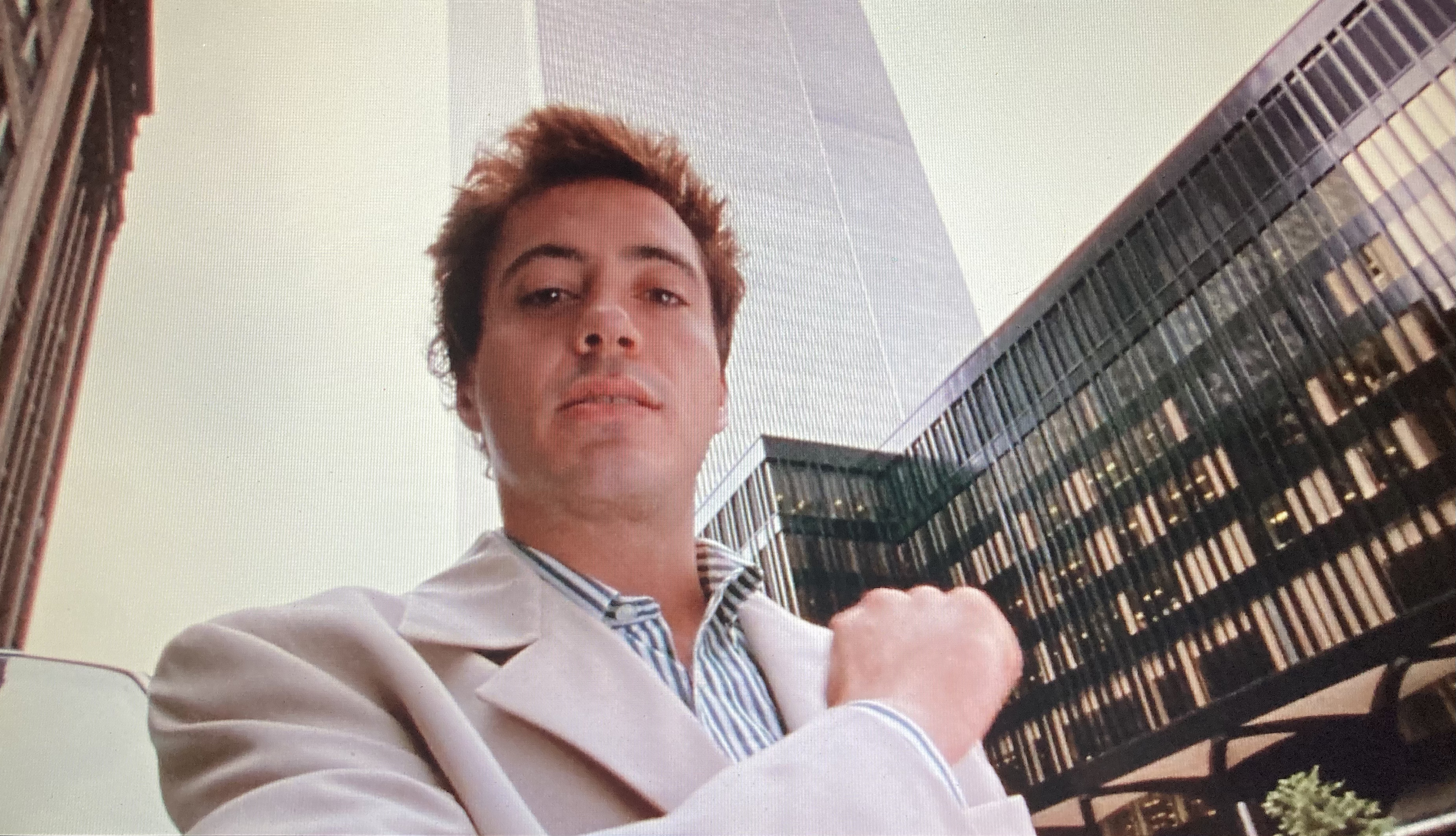
“Hell yeah,” a young black man replies, “They’re on a power trip.”
“Do you think these riots help or hurt?” Downey asks a graffiti artist.
“I think it hurts ourselves to be burning down our own neighborhoods and looting our own stores, but I understand the frustration of the people. You talk and write your congressman and do all the things you’re supposed to do in a democratic society and it doesn’t work - especially for minorities.”
In between black and white footage of the pandemonium surrounding the election, THE LAST PARTY takes us through the Democratic National Convention at Madison Square Garden. As Clinton speaks political platitudes to an uproarious crowd, the film cuts to a plethora of monitor screens, broadcast panels, political correspondents, and camera men.
“Television is our public airwaves,” Oliver Stone, writer and director, tells Downey amidst the media frenzy at the DNC, “But they’ve been leased to the twenty-three corporations that control America. So there’s no way you can have a serious debate, a serious discussion, a serious campaign...it takes cataclysmic events to really rock us out of the complacency and hypocrisy that we see here today.”
Backstage at the DNC, Downey holds court in a celebrity packed green room as comedian Richard Lewis confesses, “I flew three thousand miles for Clinton and I saw the way we were, okay? How’s that?”
“Do you think these riots help or hurt?” Downey asks a graffiti artist.
“I think it hurts ourselves to be burning down our own neighborhoods and looting our own stores, but I understand the frustration of the people. You talk and write your congressman and do all the things you’re supposed to do in a democratic society and it doesn’t work - especially for minorities.”
In between black and white footage of the pandemonium surrounding the election, THE LAST PARTY takes us through the Democratic National Convention at Madison Square Garden. As Clinton speaks political platitudes to an uproarious crowd, the film cuts to a plethora of monitor screens, broadcast panels, political correspondents, and camera men.
“Television is our public airwaves,” Oliver Stone, writer and director, tells Downey amidst the media frenzy at the DNC, “But they’ve been leased to the twenty-three corporations that control America. So there’s no way you can have a serious debate, a serious discussion, a serious campaign...it takes cataclysmic events to really rock us out of the complacency and hypocrisy that we see here today.”
Backstage at the DNC, Downey holds court in a celebrity packed green room as comedian Richard Lewis confesses, “I flew three thousand miles for Clinton and I saw the way we were, okay? How’s that?”

“Was Clinton your first choice?” Downey asks.
“What other choice is there!?” Lewis responds, “It’s like voting for Alf! There’s no one else. C’mon!”
Downey also sits down with John Kerry, who strongly criticized President Bush for misleading the country after the invasion of Iraq: “Our government lies. It’s extraordinary the degree to which they’ll classify information in the name of embarrassment or political ideology and avoid telling the American people the truth.”

Before THE LAST PARTY transitions to the Republican National Convention, it takes a brief detour into the conspiratorial. Downey speaks with self-proclaimed pundits operating on the political fringes; theorists who have zoomed out from the two party system governing America, focusing on a hidden new world order that controls the globe. Whether it be the illuminati, aliens, or inter-dimensional species, what is clear to them is that the government is lying about what’s really going on, and the media is trying to distract the public from the truth.
When Downey arrives in Houston, he stops at a Bush rally, speaking to a group of young republican voters about the main issues concerning them, as well as the failure of mainstream media to accurately represent republican values: “To me, PC culture and liberalism is more stringent, more vindictive, and more dangerous than McCarthyism could’ve ever been and ever was,” a woman tells Downey, prompting an explosion of applause.
When Downey arrives in Houston, he stops at a Bush rally, speaking to a group of young republican voters about the main issues concerning them, as well as the failure of mainstream media to accurately represent republican values: “To me, PC culture and liberalism is more stringent, more vindictive, and more dangerous than McCarthyism could’ve ever been and ever was,” a woman tells Downey, prompting an explosion of applause.

Arriving at The Astrodome for the RNC, Downey browses through a merch table in the lobby, filled with posters of a young Ronald Regan from his Hollywood days with a noose tied around his neck, the caption reading, “STOP THE LIBERAL MEDIA LYNCH MOB!” These posters are surrounded by a variety of “I DON’T BELIEVE THE LIBERAL MEDIA” bumper stickers and “CBS: RATHER BIASED” decals. Much of this merchandise is made by Accuracy In Academia, a non-profit organization seeking to counter what it sees as liberal biases in the media.
Speaking to a packed Astrodome, Pat Buchanan proclaims, “Like many of you last month, I watched that giant masquerade ball at Madison Square Garden, where twenty- thousand liberal radicals came dressed up as moderates and centrists in the greatest exhibition of cross dressing in American political history...this is a cultural war...this war is for the soul of America.”
In quite possibly the most prophetic moment of THE LAST PARTY, Downey summarizes his trips to the DNC and the RNC by saying, “America’s new enemy is its own: the liberals, the media, homosexuals, minorities, woman who want to be empowered. The new American enemy is the other Americans.”
Speaking to a packed Astrodome, Pat Buchanan proclaims, “Like many of you last month, I watched that giant masquerade ball at Madison Square Garden, where twenty- thousand liberal radicals came dressed up as moderates and centrists in the greatest exhibition of cross dressing in American political history...this is a cultural war...this war is for the soul of America.”
In quite possibly the most prophetic moment of THE LAST PARTY, Downey summarizes his trips to the DNC and the RNC by saying, “America’s new enemy is its own: the liberals, the media, homosexuals, minorities, woman who want to be empowered. The new American enemy is the other Americans.”
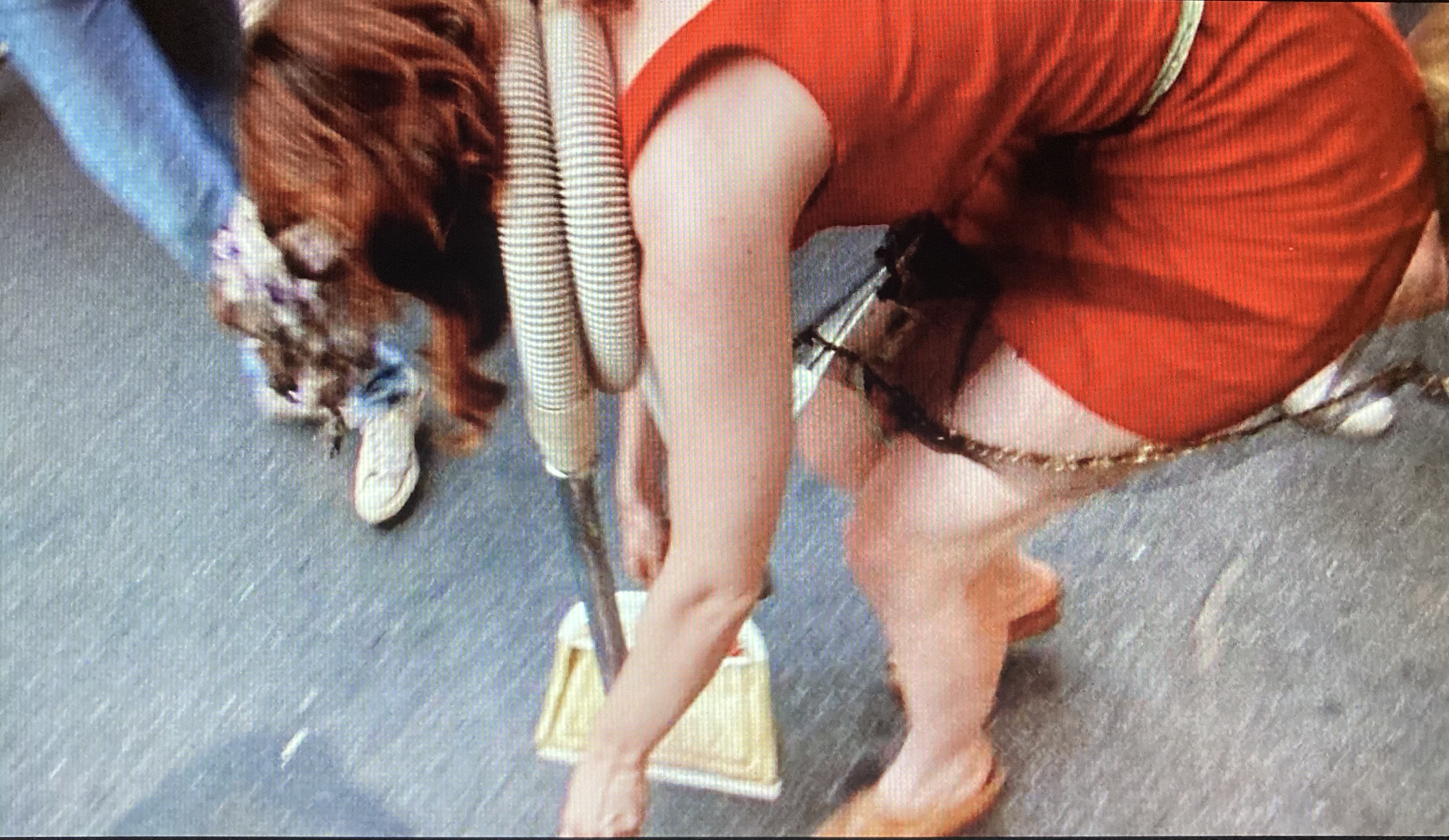
On election night, Downey is at home with his family, watching the news coverage. Upon winning the election, Clinton announces to television sets across America, “With high hopes, brave hearts, and massive numbers, the American people have voted to make a new beginning.”
The rest is history.
Historically, America has always had a short term memory. We’re quick to forget our recent past in favor of whatever the present crisis is, failing to realize that there is much to be learned from our previous shortcomings in order to build a more harmonious future. With this in mind, THE LAST PARTY is both a cultural time capsule and a disheartening case of déjà vu.
The rest is history.
Historically, America has always had a short term memory. We’re quick to forget our recent past in favor of whatever the present crisis is, failing to realize that there is much to be learned from our previous shortcomings in order to build a more harmonious future. With this in mind, THE LAST PARTY is both a cultural time capsule and a disheartening case of déjà vu.

The criticism against THE LAST PARTY is fair. It’s biased and liberally skewed in its design: a famous actor born out of the Hollywood machine, a town and industry that has always prided itself on its progressivism, attempts to use his star-power to make a documentary about politics. How objective can it possibly be? But rather than condemn THE LAST PARTY for its flaws, we should view it as a cinematic artifact to learn from. Close to thirty years later, why have none of the societal issues highlighted in the film changed? And how can we bring about real change moving forward?
2020 has been a hellacious year, capsized by a global pandemic that ravaged America, exposing the faulty foundation of our government and sending our society into a manic disseverance. It’s inherently unfair to compare 1992 to 2020. Both years have been painted by their own circumstantial colors, reflective of their own unique time and place. But after viewing THE LAST PARTY, it’s hard to deny that both years have similar shades and textures, utilizing the same brush and easel we’ve been using to create American history for generations. And even more so than the canvas, emphasis should be placed upon the frame in which he hold this American mosaic, and where we choose to mount it within the walls of our shared cultural zeitgeist.
2020 has been a hellacious year, capsized by a global pandemic that ravaged America, exposing the faulty foundation of our government and sending our society into a manic disseverance. It’s inherently unfair to compare 1992 to 2020. Both years have been painted by their own circumstantial colors, reflective of their own unique time and place. But after viewing THE LAST PARTY, it’s hard to deny that both years have similar shades and textures, utilizing the same brush and easel we’ve been using to create American history for generations. And even more so than the canvas, emphasis should be placed upon the frame in which he hold this American mosaic, and where we choose to mount it within the walls of our shared cultural zeitgeist.

In contrast to 1992, a point in technological communication that was caught in-between the advent of a sleek device called the pager and the plastic receiver of a landline, our election year has been besieged by social media. Ranging from long-winded diatribes on Facebook to reductionist typography Instagram stories to two hundred and eighty-two character “full-stop” hot takes on Twitter, the consumption of these dopamine inducing digital platforms have exasperated our already fractured country, creating complex hives of indignation for our collective outrage to swarm around. We’re caught in an endless feedback loop that is as exhaustive as it is toxic.
It’s easy to retroactively judge the past through a modern lens. It’s in our nature to “monday morning quarterback” our way through the flaws of history as contemporary ideology deems so. It’s far more difficult to view people within the context of their time, to understand the cultural landscape that they revered and despised, to commit their successes and failures to memory so that yesterday does not become tomorrow. There is much we can learn about our uncertain future by looking into our own certain past. THE LAST PARTY shows us where we have been, but what does it show about where we are going?
It’s easy to retroactively judge the past through a modern lens. It’s in our nature to “monday morning quarterback” our way through the flaws of history as contemporary ideology deems so. It’s far more difficult to view people within the context of their time, to understand the cultural landscape that they revered and despised, to commit their successes and failures to memory so that yesterday does not become tomorrow. There is much we can learn about our uncertain future by looking into our own certain past. THE LAST PARTY shows us where we have been, but what does it show about where we are going?
https://www.youtube.com/watch?v=8wLwxmjrZj8
playlist by Rocko Walker
ALEXANDRA MARZELLA’S HOME BIRTH
EXPERIENCE
Text and Interview by Timothy Ryan White and Jay Miriam
October 2020
To say, “that takes balls," would be an elephantine trivialization of what this soon-to-be-mother was entering into. The phrase “going into labor” can often sound as synonymous to unmarked ears as “going out to lunch”, but unlike lunch, it can often last from 12 to 36 hours — and while biting into an olive pit with your salad may be uncomfortable, pushing a Hades-grown-watermelon-with-shoulders out of you while people shout, “push — breathe…,” is worse. It takes the work of your entire body, mind, and every force of strength you never even knew you had, to push a human baby out of your body. And even though women have been doing it ever since we’ve been here doing it, it takes an extremely brave and powerful woman to face childbearing at home. Alexandra did it. And Maak Haus is thankful that she sat down to answer our questions.

Maak Haus: Did you always know you were going to have a home birth, or was there a deciding moment?
Alexandra Marzella: Once I decided, I knew I wanted to do it that way.

MH: Did you have any cravings in your first trimester?
AM: Just for love and affection.
MH: When was your estimated due date, and when was baby Earth born?
AM: April 23rd, May 5th.
MH: Did you have a favorite song during your pregnancy?
AM: I listened to a lot of beautiful break-up music. FKA Twigs, Okay Kaya, Caroline Polachek
MH: Did pregnancy change your life in any unexpected ways?
AM: I didn't expect to get pregnant, or feel so strongly about seeing it to term.

MH: What was it like when you realized you were in labor? Was there the typical Hollywood "omg - my water broke!", or was it something more subtle?
AM: I wiped when I went pee and there was a little bit of blood. I had taken a blue cohosh tincture that morning and then I started having menstrual-like cramps.

MH: Did you find yourself having any recurring thoughts or memories while in labor?
AM: I was worried about me and the father's dynamic. Mostly I was trying to get through the pain.
MH: What was the atmosphere like at your home birth? Did you have certain lighting or music playing?
AM: It was rolling. We were 11 people deep. I spent a lot of time in the bath/shower. I was so pissed when I realized it was light out and my midwife and doula made me leave the bathroom and walk/dance in the bright common area. I played some music but there was mostly none.

MH: How did you cope with the pains of labor? How long did your labor last?
AM: I moved around a lot, I projectile vomited all 3 times I laid down. Counter pressure on my lower back and hips was incredibly important. There wasn't a ton of coping. Hot water helped. I just had to go through it. I was in labor for 20 hours, 14 or so were active. It was awful :)
MH: Where did you give birth?
AM: In my bathtub

MH: Who was with you?
AM: My roommates, best friends, Midwife, Doula, 2 photographers and the father.
MH: Knowing what you know now, is there anything you would do differently?
AM: Not take that tincture, maybe. Maybe get some black out curtains. A dream would be to labor in nature in warm weather and a warm body of water.
MH: And last question,
How has life changed for you since becoming a mother?
AM: I have very little time to fuck around. I spend most of my energy taking care of Earth. I want to conserve as much as possible and am more motivated than ever to be a better me.

Alexandra’s Instagram is @artwerk9999

